Your Lungs are Amazing!
The lungs should be considered “the environmental organ.” They are unique in their size and formation, and they interface with all the materials you inhale from the community environment, the work environment, and the personal environment. The lungs are made up of a series of branching tubes that provide the pathways for air entry and exit. These pathways, called bronchi, are exquisite in their design, with each tube branching twice: The major airway or windpipe (trachea) divides into two main bronchi, which in turn beget smaller and smaller orders of bronchi until some 22 divisions result in the final conducting passageways.
The respiratory or gas exchange function of the lungs begins in tiny sacs or folded structures (alveoli) attached to these tiny passageways. These smallest passageways continue to branch and finally connect with alveolar ducts, passageways thoroughly lined by alveoli. Each duct ends in a mass of alveoli. The alveolar-capillary membrane lines all of the alveoli and works as the blood-air interface. It allows life-giving oxygen into the blood and extracts the waste gas, carbon dioxide, from the blood. This delicate membrane is only 1/50th the thickness of tissue paper, thin enough to transport oxygen and carbon dioxide, but still a barrier against fluid formation within the alveolar spaces.
The lungs are the largest organ in the body. The total surface of the alveolar membrane varies from 100 to 200 square meters, depending on the size of the person. The overall surface area of the alveolar membrane has frequently been equated to that of a tennis court. This comparison is really an underestimation! Thus, the lungs are by far the largest organs that make intimate contact with the environment.
The lungs are also the only organs of the body that receive all the blood from the heart with every heartbeat. Thus, any material in the bloodstream circulates through the lungs constantly. Some materials, such as small blood clots, can injure the membrane and cause the lung to leak fluid. Infections can cause pneumonia, and heart failure can flood the lungs. In these conditions, gas exchange becomes abnormal.
People who truly understand the lungs marvel at their complexity. Consider that roughly 100,000 small air passages that feed a membrane surface area greater than the size of a tennis court! This membrane wraps itself around at least 300 million alveoli and is lined with a myriad of tiny blood vessels called capillaries. Consider further the fact that approximately four quarts of air pass through the gas-exchange surface each minute, along with some five liters of blood, which traverse the capillary membrane. This magnificent machine occupies the chest cavity and, in all, is some 4 to 6 quarts of total volume. We certainly must consider the lungs the most exquisite packaging job in nature, and their function a splendid orchestration. Only the brain possesses greater complexity and capability in design and function.
Oxygen is required for all organ functions, including heart functions that are involved in every living activity. Oxygen is critical to the survival of all human beings. A shortage of oxygen affects every organ in the body. The brain has the highest oxygen requirement of all the organs. The heart has an immense oxygen requirement compared with the other organs in the body. The liver, kidneys, and all other organs require oxygen for their own vital functions. Thus, in states of oxygen deficiency, the whole body becomes robbed of vital energy.
Oxygen is involved in the process of metabolism, which converts food into the energy we need to live. The by-product of metabolism is carbon dioxide. The lungs remove carbon dioxide from the blood as it is returned from the tissues. When the lungs cannot exhale enough carbon dioxide, there is a toxic build-up, resulting in “acidosis,” an acid poisoning of all cells of the body. The brain, heart, and other organs are also impaired by carbon dioxide retention.
Understanding the lungs would be easy if they simply exchanged oxygen and carbon dioxide, but they do much more. Many of the body’s chemicals are either inactivated or activated by the lungs. For example, the lungs activate a hormone that helps control blood pressure. The lungs, through their normal function, affect our daily moods and emotions.
Naturally, the lungs must be defended against outside damage, and research has revealed some fascinating defense mechanisms. The nose acts as a filter, and the conducting air passages contain a protective mucous lining. Within the lungs, tiny hair-like cells called cilia sweep the air entering the lungs almost constantly, acting as janitors. Scavenging cells, called macrophages, are poised and ready to engulf particles that evade their sentinels. Macrophages are potent obstacles to damage from the environment, but these cells can release enzymes that damage the lung’s delicate structure.
Small amounts of normal lung fluids also help the lungs defend themselves. The surfactant system of the lungs allows easy filling and emptying of the lungs. Surfactant also provides an antibacterial and immune function to protect against infections. Within the blood vessels of the lungs, an anti-clotting system combats small accumulations of damaging cells, aggregates, and small clots that enter the lungs from other parts of the body. Thus, normal lung fluids are being formed and washed away constantly. The lungs have anti-irritants, anti-infectives, anti-enzymes, and immune defense mechanisms, all of which are coordinated to serve these organs well.
The gas-transfer function of the lungs is well understood today. In fact, everyone should learn about this process, the essence of normal organ system function. The biochemical or non-respiratory functions of the lungs are less recognized. We continue to marvel at the hormonal activities of the lungs that regulate other functions of the body, possibly including the brain. Thus, the lungs work in cooperation with the brain, and are the main control system for the body. The lungs are unequaled in their diversity of functions and contributions to the health of the individual.

